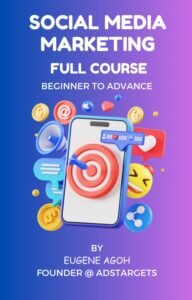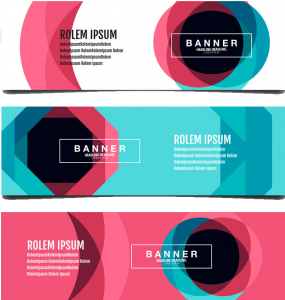Unless you’re a pro juggler (or actually went to clown college—respect if you did), marketing your business across multiple platforms can feel like a chaotic balancing act. One minute, you’re scheduling social media posts, the next, you’re tweaking ad campaigns, and somehow, you still have emails to send and content to create.
Yeah, it’s a lot on your plate.
Cross-channel advertising meme—everything on a to-do list. That’s so much.
If marketing your business feels like this, you’re not alone.
But here’s the thing—you don’t have to feel like you’re constantly jumping through hoops just to stay visible. The key to making it all work without losing your mind? Cross-channel advertising.
I know, I know—just hearing that term might make you wonder:
What exactly is cross-channel advertising, and why does it matter?
How do you make it work without burning out?
What strategies actually drive revenue across multiple platforms?
Don’t sweat it, I promise you, don’t sweat it. I’ve got you covered. Let’s break it all down so you can market smarter—not harder.
Table of Contents
ToggleWhat is Cross-Channel Advertising?

Before we dive into cross-channel advertising, let’s start with the basics—marketing channels. These are all the different spots where you can promote your business, both online and offline. And chances are, you’re already using more than you think.
Every time you connect with your audience—whether it’s through a Facebook ad, an email, a TikTok post, a Google search result, or even a billboard—you’re tapping into a marketing channel. Even things like live chat on your website, SMS marketing, and word-of-mouth referrals all count. If it’s a way to get your brand in front of people, it’s a channel.
Now, cross-channel advertising takes things up a notch. It’s not just about being everywhere—it’s about being strategic with how all these channels work together. Instead of running random ads on Instagram while sending unrelated email campaigns and hoping something sticks, you’re creating a seamless, customer-focused experience across multiple platforms.
Why Does Cross-Channel Advertising Matter?

People don’t just hang out in one place online. They bounce from Google to Instagram, check their emails, scroll TikTok, and maybe even see an ad while streaming a podcast. Cross-channel advertising makes sure your brand follows them in a non-annoying, helpful way—guiding them through the sales funnel naturally.
Here’s how it works:
A potential customer sees your Instagram Reel about your product.
Later, they Google it and see a paid search ad reinforcing why it’s awesome.
They visit your website but don’t buy—so they get retargeted with a personalized offer via email.
A few days later, they scroll through TikTok and see a customer testimonial about your product.
By the time they’re ready to buy, it feels like a natural decision, not a pushy sales pitch—because every channel is working together to build trust and drive action.
Cross-channel advertising isn’t about throwing spaghetti at the wall and seeing what sticks. It’s about making sure every platform, ad, and interaction is connected, consistent, and aligned with the customer journey. When done right, it’s not just marketing—it’s a full-blown experience that turns casual browsers into loyal buyers.
So, if you’ve been marketing in silos, it’s time to switch things up. Let’s get into how you can actually pull this off for maximum revenue and zero wasted effort.
Cross-Channel Advertising vs. Multi-Channel Marketing: What’s the Difference?
A lot of people mix up cross-channel advertising with multi-channel marketing, and honestly, it’s easy to see why. Both involve using multiple platforms to reach your audience, but the way they work behind the scenes? Totally different.
Let’s break it down.
Multi-Channel Marketing: The “Throw Everything Out There” Approach
With multi-channel marketing, you’re promoting your business on multiple platforms—Google, Facebook, LinkedIn, email, SMS, wherever—but these channels aren’t talking to each other. Each one is doing its own thing, and while your messaging might stay consistent, it doesn’t necessarily adapt to how a customer interacts with your brand.
Basically, it’s like having separate billboards on different highways. They all promote the same business, but they don’t change based on whether someone has already seen one of them before.
Example:
Say you run an IT services company. A potential customer searches cloud migration on Google, sees your ad, clicks on it, and checks out your site—but they don’t take any action.
Later, they’re scrolling through Facebook and see another ad from you, but it’s generic. Maybe it’s talking about all your IT solutions, even though what they cared about was cloud migration. They don’t click it.
The following week, they’re on LinkedIn and see an ad about enterprise IT benchmarks, which may or may not be relevant to them. Again, it’s not tailored to what they originally searched for.
See the problem? The marketing efforts are spread across channels, but they’re not connected. There’s no progression or personalization based on what the user actually did.
Cross-Channel Advertising: The “Smart and Seamless” Strategy
Now, cross-channel advertising is where things get strategic. Here, all your channels work together, sharing data and adapting based on customer behavior. Instead of treating each platform like its own separate island, you’re guiding the customer through a connected experience.
Every ad, email, and touchpoint picks up where the last one left off, making it feel more personalized and less like a random string of promotions.
Example:
Let’s take that same IT provider scenario but this time, apply cross-channel advertising.
Step 1: A potential customer searches for cloud migration on Google and clicks your ad. They browse your site but leave without taking action.
Step 2: Later, while scrolling Facebook, they see a lead ad—not for just any IT service, but for a free cloud migration guide. Since that directly relates to their earlier search, they download it.
Step 3: In the lead form, they indicate their company size. Now, your system knows whether they’re a small business or a big enterprise.
Step 4: The next week, while they’re on LinkedIn, they see an ad for a webinar: “10 IT Mistakes Small Businesses Make” (if they’re a small biz) or “How Enterprises Scale Cloud Infrastructure” (if they’re a bigger company).
Step 5: They register, attend the webinar, and by the end, they’re signing up for a consultation because every step of their journey felt natural and relevant.
That’s the power of cross-channel advertising.
Why Cross-Channel Advertising Wins

The biggest difference? With multi-channel marketing, you’re just showing up in different places. With cross-channel advertising, you’re strategically leading potential customers through a journey, serving the right content at the right time, based on what they’ve already done.
It’s not just about being everywhere—it’s about being smart about it.
Now, don’t get me wrong—multi-channel marketing is still valuable. You want to be present on multiple platforms. But if you want better engagement, higher conversions, and a smoother customer experience, you need at least some of those channels working together in a cross-channel system.
At the end of the day, people don’t move in a straight line when they’re considering a purchase. They jump between Google, social media, email, and beyond. If your marketing flows with them instead of working in silos, you’re way more likely to turn clicks into customers.
And that’s what cross-channel advertising is all about.
Is Cross-Channel Advertising Right for You?

Listen, if you’re still relying on just one marketing channel, you’re leaving a ton of money on the table. And while multi-channel marketing is better, cross-channel advertising is the real game-changer if you want higher conversions, better engagement, and a smarter use of your marketing budget.
So, how do you know if cross-channel advertising is the right move for you? Let’s break it down.
#1. You Want to Maximize Your Results (Who Doesn’t?)
If your goal is to get more leads, sales, and revenue, then cross-channel advertising is a no-brainer. Why? Because it’s built around customization—your messaging adapts based on where each potential customer is in the funnel.
Think about it. If someone just discovered your brand, they probably aren’t ready to buy yet. But if they’ve clicked on your site a few times, checked out your pricing page, or downloaded a freebie? That’s a hot lead—and you need to serve them the right offer at the right time.
Cross-channel advertising makes sure each ad, email, or piece of content feels relevant instead of random. And when marketing feels more like a conversation than a sales pitch, people actually pay attention.
#2. You’re Tight on Time (But Still Want Results)
A lot of marketers assume that cross-channel advertising takes way too much time. But here’s the thing—it actually saves you time in the long run.
When you unify your marketing efforts across different platforms, you can:
✅ Streamline content creation (no more creating random one-off campaigns)
✅ Automate and personalize (less manual work, more smart targeting)
✅ Simplify reporting (track what’s working across channels instead of piecing together a bunch of different analytics tools)
Instead of running around like a headless chicken, hoping your ads will work, you’ll have a system that does the heavy lifting for you.
#3. You’re Working with a Tight Budget (Stretch Every Dollar)
If you’re not rolling in an unlimited ad budget, you need to make every dollar count—which is exactly what cross-channel advertising helps you do.
Instead of dumping all your money into one platform and hoping for the best, you can:
Test different placements and formats (Google Ads, Facebook Ads, LinkedIn, email, etc.)
Retarget warm leads instead of chasing cold ones (cheaper and way more effective)
Double down on what’s actually working (so you’re not throwing money at platforms that aren’t converting)
Basically, you’re squeezing the most out of your budget by making sure your ads work together, rather than competing with each other.
#4. Your Audience is Busy (Catch Them Everywhere They Go)
People don’t just sit in one place online anymore. They’re bouncing between Google, Instagram, LinkedIn, email, and TikTok—sometimes in the same hour. If your marketing isn’t following that pattern, you’re missing out big time.
With cross-channel advertising, you’re meeting your audience at every touchpoint in their journey:
✅ They search for something on Google? You’re there.
✅ They scroll past your ad on Facebook? You remind them why they clicked in the first place.
✅ They open their email? Boom—there’s an exclusive offer waiting for them.
The result? You stay top-of-mind, and they’re way more likely to move from curious browser to paying customer.
If you want to:
✔ Make your marketing work smarter, not harder
✔ Save time while increasing your conversions
✔ Get the most out of your budget
✔ Stay visible in a crowded digital world
Then YES—cross-channel advertising is absolutely right for you.
At the end of the day, it’s not about being everywhere just for the sake of it—it’s about showing up where your customers are, with the right message at the right time. That’s what turns clicks into conversions.
The Big Wins of Cross-Channel Advertising

Look, if you’re still wondering whether cross-channel advertising is worth the hype, let’s break it down. We’ve already touched on a few perks, but let’s hit you with some hard facts and real benefits—because this strategy isn’t just “nice to have,” it’s a must-have if you want to drive conversions, build brand loyalty, and stay ahead of the competition.
#1. People Need Repeated Exposure—Cross-Channel Advertising Speeds That Up
Ever heard of the “Rule of 7”? It says that the average consumer needs to see your brand at least seven times before they pull the trigger and make a purchase. But here’s the thing—those seven touchpoints shouldn’t feel random or disjointed.
With cross-channel advertising, you make sure that every interaction is intentional, relevant, and perfectly timed. Instead of bombarding people with the same generic message over and over, you’re guiding them through the buyer’s journey in a natural way.
🔹 Old-school approach? Someone sees your ad on Instagram, ignores it, then later sees a completely unrelated email from you that feels out of place.
🔹 Cross-channel advertising? They see an ad for your product on Instagram, then a personalized follow-up email based on what they engaged with, and later, a YouTube retargeting ad that speaks directly to their concerns.
See the difference? Instead of just hoping they remember you, you’re strategically staying on their radar with the right message at the right time—which means they might not even need seven encounters before they convert.
#2. Consistency Builds Trust (And People Expect It!)
You ever get whiplash from a brand that feels totally different across different platforms? One day their Instagram is all playful and fun, but then their emails are dry and corporate, and their website looks like it was made in 2005. It’s confusing—and confusion kills conversions.
Turns out, 87% of consumers want brands to be more consistent across their marketing channels. That’s where cross-channel advertising comes in.
Unlike multi-channel marketing (where each platform operates in a silo), cross-channel advertising creates a seamless, unified experience—no matter where your audience interacts with you.
✅ Instagram? Same messaging and vibe as your website.
✅ Email? Feels like a natural continuation of the conversation from social media.
✅ Ads? Perfectly aligned with what the customer has already shown interest in.
This kind of consistency makes your brand feel reliable, polished, and professional—and when people trust your brand, they’re way more likely to buy from you and stick around.
#3. More Channels = Higher Conversions (287% Higher!)
Still not convinced? Here’s a stat that should wake you up: Brands using three or more marketing channels see a 287% higher conversion rate compared to those using just one.
That’s not a typo—287% higher.
Why? Because people don’t live on just one platform.
Think about how you browse the internet. Maybe you start on Google, then hop over to Instagram, check your email, and later scroll through LinkedIn. If a brand is only targeting you on one of those channels, they’re missing out on multiple opportunities to engage you.
Cross-channel advertising makes sure that no matter where your audience is, your brand is right there with them—helping, educating, and nudging them toward a purchase without feeling intrusive.
#4. Cross-Channel Advertising Creates Repeat Customers (And That’s Where the Real Money Is)
New customers are great, but let’s be real—the real goldmine is in repeat business. And guess what? Businesses that engage with customers across multiple channels see nearly 90% of their customers coming back for more.
Why? Because consistent engagement builds relationships.
When people see your brand across multiple touchpoints—not just before they buy, but after—they feel like they actually know you. And when customers feel connected to a brand, they:
✔ Buy again (hello, repeat revenue!)
✔ Tell their friends about you (free word-of-mouth marketing!)
✔ Engage with your content and stay loyal (aka long-term success!)
Cross-channel advertising isn’t just about getting more sales today—it’s about building a community of engaged customers who keep coming back.
At this point, the question isn’t “Should I do cross-channel advertising?”—it’s “Can I afford NOT to?”
If you want to:
✅ Speed up conversions by delivering the right message at the right time
✅ Keep your brand consistent across platforms and build trust
✅ Massively increase your conversion rates
✅ Turn one-time buyers into repeat customers
Then yes—cross-channel advertising is exactly what you need.
Marketing today isn’t about shouting into the void and hoping for the best. It’s about showing up where your customers are, speaking their language, and guiding them effortlessly from interest to purchase.
That’s the power of cross-channel advertising—and if you’re not using it, your competitors definitely are.
How Many Channels Do You Really Need for Cross-Channel Advertising?

A question I get all the time: “How many channels are enough channels?” And honestly? There’s no magic number.
Every brand is working with different goals, budgets, and resources, so saying “you need exactly X channels” would be straight-up bad advice. What really matters is how well you can connect and integrate those channels into your overall marketing strategy.
That said, if you’re trying to figure out the right number of channels for your cross-channel advertising strategy, here are some key things to consider:
#1. Your Budget (Because Money Talks)
Budget is always a deciding factor. More channels mean more investment, whether it’s in paid ads, content creation, or team bandwidth. But don’t fall into the trap of thinking big budget = more channels, and small budget = fewer channels—it’s really about how you allocate what you have.
✅ If you have a bigger budget, don’t just blast yourself everywhere. Focus on the channels that give you the highest return and where your audience actually hangs out.
✅ If you’re working with a smaller budget, go for high-impact, high-engagement channels first. It’s better to dominate 3-4 channels than to half-ass 10.
Pro Tip: A solid rule of thumb is that 5-10% of your revenue should go toward marketing. If you’re scaling aggressively, that number can climb to 14% or more.
#2. Your Audience (Meet Them Where They Are)
Before you pick your channels, you need to picture your ideal customer’s daily routine.
Where do they hang out online?
Are they on social media all day, or do they prefer email and Google searches?
Do they engage with video content, blog posts, or podcasts?
Are they more likely to click an Instagram ad or search for solutions on YouTube?
The goal of cross-channel advertising is to seamlessly reach your audience at different touchpoints—not to spread yourself too thin. So instead of picking random channels, pick the right channels that match your customer’s habits.
#3. Your Business Goals (What Are You Trying to Achieve?)
Your marketing goals also dictate how many (and which) channels you need.
✅Trying to boost brand awareness? You’ll want a mix of paid ads, social media, and content marketing.
✅Looking to drive direct sales? Email marketing + retargeting ads + SEO might be your best combo.
✅Building long-term customer loyalty? Community engagement, SMS marketing, and personalized email flows can help.
Bottom line: The right channels depend on what you’re trying to accomplish, not just on what’s trendy.
#4. Your Resources (Because You Can’t Do It All)
Even if you have a solid budget and a clear audience, there’s still one major roadblock: time and manpower.
Let’s face it—you (or your team) can only handle so much at once. The last thing you want is to be on 10 different platforms but doing a half-baked job on all of them.
🔹 Do you have a team that can handle multiple channels at once?
🔹 Are you using tools to automate and streamline your efforts?
🔹 Can you easily track your performance across channels?
If you’re strapped for time, invest in tools that make cross-channel advertising easier, like:
✔ CRMs to keep customer data and messaging aligned
✔ Marketing automation platforms to schedule posts, emails, and ads
✔ Analytics dashboards to track everything in one place
So, How Many Channels Should You Start With?

If you’re still stuck, here’s my advice:
✅Start with three.
Three channels let you test different strategies, reach your audience effectively, and see what’s working—without getting overwhelmed.
Once you’re comfortable with those, scale up. Add more channels only when you can manage them well and ensure they’re properly integrated into your strategy.
Cross-channel advertising isn’t about being everywhere just for the sake of it—it’s about being in the right places at the right time with the right message.
So don’t stress about hitting a magic number. Instead, focus on:
✅ Picking channels that align with your budget, audience, and goals
✅ Integrating those channels so they work together, not separately
✅ Scaling up only when you’re ready to handle more
The real question isn’t “How many channels should I use?”—it’s “How well can I connect and optimize the ones I choose?” Nail that, and you’ll see the results you’re looking for.
How to Build a Killer Cross-Channel Advertising Strategy?
So, you’re thinking about diving into cross-channel advertising, but you’re wondering—how hard is it to actually pull off? The short answer: it’s totally doable. You don’t need a massive team or an unlimited budget—just a smart strategy that connects the dots between the channels your audience actually cares about.
If you’re serious about getting this right, here are ten game-changing tips to make your cross-channel advertising work like a well-oiled machine.
#1. Get Inside Your Customer’s Head (Map the Journey)
Before you start blasting ads everywhere, take a step back. Where do your customers hang out? What’s their journey from ‘just browsing’ to ‘take my money’?
Break it down:
✅How do people first discover your brand? (Social media? Google search? Word-of-mouth?)
✅What makes them trust you enough to stick around? (Reviews? Free trials? Killer content?)
✅When do they finally decide to buy? (Do they need multiple touchpoints before pulling the trigger?)
✅Look at your past data. What worked? What flopped? Then, use that info to shape your cross-channel strategy so every channel works together instead of feeling disjointed.
#2. Align Your Offers With Your Funnel (Don’t Jump the Gun)
Not everyone is ready to buy right away. Some folks need a little warming up first. If you’re shoving a “Buy Now!” ad in front of someone who barely knows your brand, you’re wasting time and money.
Think of it like dating—you wouldn’t propose on the first date, right? (Unless you love chaos.)
Instead, match your offers to where people are in their journey:
✅Cold audience (top of the funnel): Hit them with blog posts, free guides, or entertaining content. Keep it light.
✅Interested but not sold (middle of the funnel): Offer case studies, product demos, or email sequences that build trust.
✅Hot leads (bottom of the funnel): Now’s the time for discounts, limited-time offers, and clear calls to action.
✅Make sure your messaging flows naturally between channels—if someone first sees your ad on social media, then looks up your brand later on Google, the experience should feel connected, not random.
#3. Pick the Right Channels (Work Smarter, Not Harder)
More isn’t always better. Instead of trying to be everywhere all at once, focus on the channels that complement each other and drive real results.
For example:
Search ads + Social media ads → Someone sees your brand on Instagram, then later searches for you on Google.
Email marketing + Retargeting ads → They clicked your email but didn’t buy? Boom—hit them with a retargeting ad.
SEO + Content marketing → Get found organically, then nurture visitors with valuable content.
Here’s a solid list of cross-channel advertising platforms to mix and match:
✅ Website (Your home base—optimize it!)
✅ SEO (Free, long-term traffic from Google)
✅ PPC ads (Google Ads, Bing Ads)
✅ Social media (Organic posts & paid ads)
✅ Email marketing (Still one of the highest ROI channels)
✅ Remarketing ads (Follow up with warm leads)
✅ OTT & Video marketing (YouTube, TikTok, streaming ads)
✅ Direct mail & Print ads (Yes, they still work for some businesses!)
Pick 3-5 channels to start with—test, tweak, and scale from there.
#4. Budget Like a Pro (Know When to Pivot)
Here’s the deal: your budget should be flexible because what works today might not work next month.
Some platforms are cheaper than others, and ad performance can fluctuate, so always be ready to shift your budget based on what’s working.
A few quick budgeting hacks:
✅Use industry benchmarks to estimate ad costs and ROI.
✅Track performance religiously—if one channel is underperforming, reallocate funds to a stronger one.
✅Don’t sleep on retargeting—it’s often way cheaper to convert warm leads than to chase new ones.
#5. Keep It All Connected (Your Brand Should Feel Seamless)
Ever click on an Instagram ad, then land on a website that looks nothing like the ad? Super frustrating, right?
Consistency is everything in cross-channel advertising. Keep these in sync:
✅Brand voice (Keep your tone the same across platforms.)
✅Visual identity (Same colors, fonts, and vibe.)
✅Messaging (Don’t switch up your core selling points.)
Your audience should feel like they’re interacting with one brand, not a bunch of disconnected ads.
6. Use Automation & Analytics to Stay on Top of It
Cross-channel advertising can get messy fast—unless you have the right tools to keep things streamlined.
Here’s what to use:
✅ CRMs & dashboards (Tools like LOCALiQ’s Client Center or HubSpot keep track of everything in one place.)
✅ Analytics tools (Google Analytics, Facebook Pixel, and UTM tracking links help you measure results.)
✅ Marketing automation (Platforms like Mailchimp, Zapier, or ActiveCampaign save you time.)
#7. Always Test, Always Optimize
What works today might flop next month. Test everything.
A/B test your ads, emails, and landing pages. Small tweaks can lead to big gains.
Watch audience behavior. Are they dropping off at a certain step? Fix it.
Look at the numbers, not just the vibes. Data > Gut feeling.
Ready to Crush Cross-Channel Advertising?
At the end of the day, cross-channel advertising isn’t just about being everywhere—it’s about being strategic about where and how you show up.
Start small, stay flexible, and focus on connecting the dots between platforms. Before you know it, you’ll have a cross-channel machine that keeps your brand top-of-mind wherever your audience goes.
If you’re serious about cross-channel advertising, you gotta track everything—no excuses. If you’re not using tracking parameters across every channel, how will you know what’s actually working? You don’t want to be out here throwing ads into the void, hoping for the best.
Every platform—Google Ads, Facebook, LinkedIn, email, you name it—should have proper tracking in place. UTM parameters, conversion tracking, event tracking—get all of it set up. Why? Because this lets you see exactly how each channel, offer, and placement is performing.
Plus, smart tracking allows you to automate your marketing efforts. Imagine this: Someone downloads Guide X, and instead of sending them to a generic thank-you page, you hit them with Thank You Page A + Offer B. That’s how you guide people deeper into your funnel without lifting a finger after setup.
Oh, and one more thing—if your conversion tracking is broken, your data is useless. Fix that ASAP, especially for search engine marketing, because bad tracking can wreck your campaigns before they even take off.
#8. Use Multi-Touch Attribution (Because One-Touch Is a Lie)
Nobody sees a single ad and immediately buys. People bounce between platforms, click on different links, check out reviews, and maybe even Google your brand a few times before making a decision. That’s why multi-touch attribution is the way to go.
Instead of giving all the credit to the first or last click, multi-touch attribution distributes credit across the entire customer journey. It shows you which touchpoints actually moved the needle and which ones were just background noise.
Some common multi-touch attribution models include:
✅Linear Attribution: Equal credit to every interaction (great for getting a general overview).
✅Time Decay: More weight on the actions closer to conversion (good for long sales cycles).
✅Position-Based (U-Shaped): 40% credit to first and last touchpoints, 20% split between the middle interactions (ideal for lead generation).
If you’re running cross-channel advertising, this isn’t optional—it’s a must. Otherwise, you’ll keep funneling money into channels that look like they’re performing well but aren’t actually driving conversions.
#9. Keep Your Reporting in One Place (Your Sanity Will Thank You)
Tracking across multiple platforms is great, but checking 10 different dashboards every day? Absolute nightmare. You need to centralize your reporting so you can see everything in one place.
Use Google Analytics, Looker Studio, or a CRM dashboard to pull in data from different channels. That way, you’re not flipping between Meta Ads, Google Ads, and your email platform trying to piece together what’s working.
With all your reporting in one place, you can:
✅Compare how each channel is performing against the others.
✅Spot trends and shifts in customer behavior.
✅Adjust your budget in real-time based on actual performance data.
Cross-channel advertising is all about synergy—but if your reporting is scattered, you’re flying blind. Don’t do that to yourself.
#10. Nurture Email Campaigns (Because Some People Need a Push)
Not everyone buys on the first, second, or even third touchpoint. Some people need a little extra nudge, and that’s where email marketing comes in clutch.
If someone engages with your cross-channel advertising but doesn’t convert, don’t just let them slip away. Automate an email sequence that keeps them in the loop:
✅First email: “Hey, saw you checking us out! Here’s more info.”
✅Second email: A success story or case study (social proof works wonders).
✅Third email: A gentle push—limited-time offer, free trial, or exclusive content.
Segment your audience so these emails actually make sense. If someone downloaded a free guide, don’t spam them with an irrelevant product pitch. Instead, guide them naturally toward the next step in their journey.
This strategy keeps leads warm and engaged without you having to do constant manual follow-ups. Plus, email is one of the highest ROI channels out there, so why not take full advantage?
#11. Be Patient (Not Every Channel Works at the Same Speed)
Listen, cross-channel advertising isn’t a magic switch that delivers instant results. Some channels work fast (PPC, paid social ads), while others take time to build up (SEO, organic social, email lists). If you’re expecting everything to pop overnight, you’re gonna be disappointed.
Instead of obsessing over quick wins, think long-term strategy:
✅PPC & paid ads: Great for immediate traffic and conversions, but can be expensive.
✅SEO & content marketing: Slow burn, but drives sustainable, long-term traffic.
✅Email marketing: Builds relationships over time and increases customer lifetime value.
✅Social media: Organic takes time, but paid social can give a quick boost.
The key is balance. Your paid channels bring in immediate results, while your organic strategies keep the momentum going over time. Stay patient, keep optimizing, and trust the process.
If you want your cross-channel advertising to work, you can’t just wing it. You need a strategy, smart tracking, multi-touch attribution, solid reporting, email nurturing, and a whole lot of patience.
Dial in your tracking, set up your attribution models, centralize your data, and keep testing until you find the mix that works best for you. It’s not rocket science—it’s just smart marketing.
Now go crush it.
Conclusion
A lot of businesses hesitate when it comes to cross-channel advertising, thinking it’s too complex or out of reach. But here’s the truth: it’s not just doable—it’s a game-changer. With the right approach, a little patience, and some smart tools, you can create a seamless marketing strategy that connects with your audience across multiple platforms. And the best part? It helps you attract, engage, and keep customers for long-term growth.
To make your cross-channel advertising strategy work like a well-oiled machine, here’s the game plan:
✅ Map out your customer journey – Know where your audience is coming from and what they need at every stage.
✅ Choose your channels wisely – Not every platform is a fit for your brand. Focus on the ones where your audience actually hangs out.
✅ Get your content ready in advance – Plan ahead so your messaging stays consistent across all channels.
✅ Keep an eye on costs – Be flexible and shift your budget where it gets the best return.
✅ Set clear goals – What does success look like? Define it from the start.
✅ Use a CRM to stay organized – Keep track of customer interactions and personalize your approach.
✅ Leverage retargeting – Stay on your audience’s radar with well-timed follow-ups.
✅ Track everything – Data is your best friend. Use tracking parameters to measure what’s working.
✅ Adopt multi-touch attribution – Give credit where it’s due by analyzing how different channels contribute to conversions.
✅ Consolidate your reporting – Keep all your analytics in one place to get the full picture.
✅ Run nurture email campaigns – Guide hesitant buyers with personalized follow-ups.
✅ Be patient and stay adaptable – Not every channel will deliver instant results. Play the long game and keep refining your strategy.
At the end of the day, cross-channel marketing isn’t about being everywhere—it’s about being strategic, intentional, and consistent. Nail that, and you’ll turn your marketing efforts into a growth engine that keeps customers coming back.








